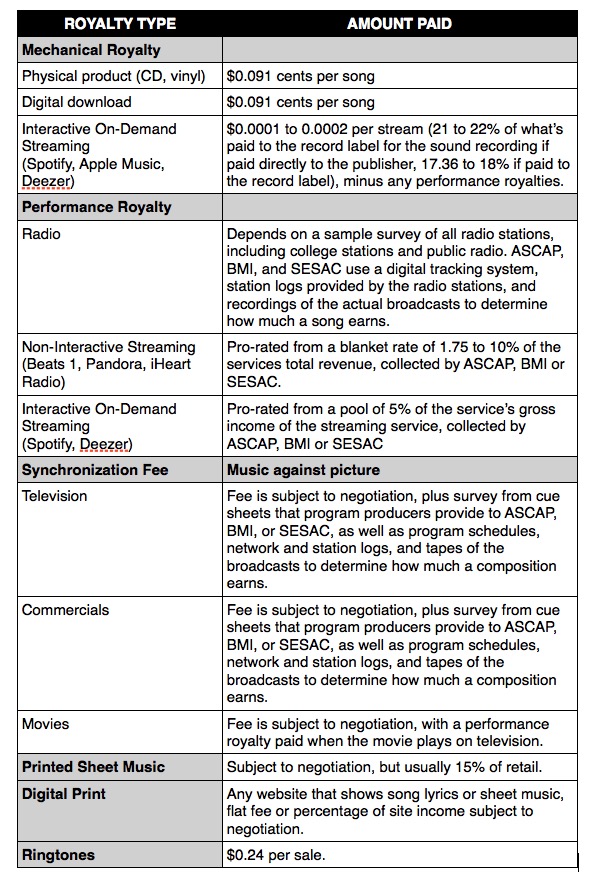Here we look at the three different sources of publishing royalties (mechanical, performance, and synch) how they’re calculated, and how a changing music business has affected how such royalties are earned.
_________________________________
Guest Post by Bobby Owsinski on Music 3.0
Regardless of the era, the songwriter and publisher have made money, and continue to make money in three primary ways:
1. Mechanical royalties are paid whenever a song is digitally downloaded, a song is streamed from an on-demand service, or a physical CD or vinyl record is sold.
2. A performance royalty is paid whenever a song is played on radio, on television, or streamed over the Internet.
3. A synchronization fee is paid when music is used against picture.
This payment mechanism hasn’t really changed all that much in Music 4.1 from previous music eras, although it’s managed to become even more complicated than it was. What has changed is that during this period in which music sales are far less than half of what they were at their peak, publishing is the one area of the music industry that has held its own. How does that happen when sales, and therefore mechanical royalties, are down, you ask?
While it’s true that mechanical royalties are not nearly what they used to be now that CD sales are so low and downloads have decreased, they’re offset by the tremendous increase in performance royalties because music is now played on so many more broadcasts than before. The 500-channel cable and satellite television universe, along with satellite and Internet radio, provides more opportunities for music to be played, and as a result, more performance royalties are generated.
That said, music publishing income is derived from more sources than you think, and while some of it doesn’t appear significant by itself, it can all add up to a nice royalty check. Here’s an excerpt of a chart from the latest edition of my Music 4.1 book that shows a simple breakdown of when publishing royalties occur, how it’s collected, and the royalty rate.

As you can see, many of the royalties and fees are variable. Synchronization fees consist of an upfront fee which is usually negotiated by the publisher, and a performance royalty whenever the piece containing the music airs on television.
With a movie, the upfront fee is the only one that’s paid for any showings in the theater, but a performance royalty is paid whenever the movie is played on television afterwards.
Likewise, both printed sheet music and digital use of sheet music or lyrics are subject to negotiation. Ringtones are still a source of income not to be overlooked even though the market for them is far below what it was during their peak.
Publishing royalties come from more places than you think, but the rates are different over a wide range of scenarios, which makes it a very complicated subject.